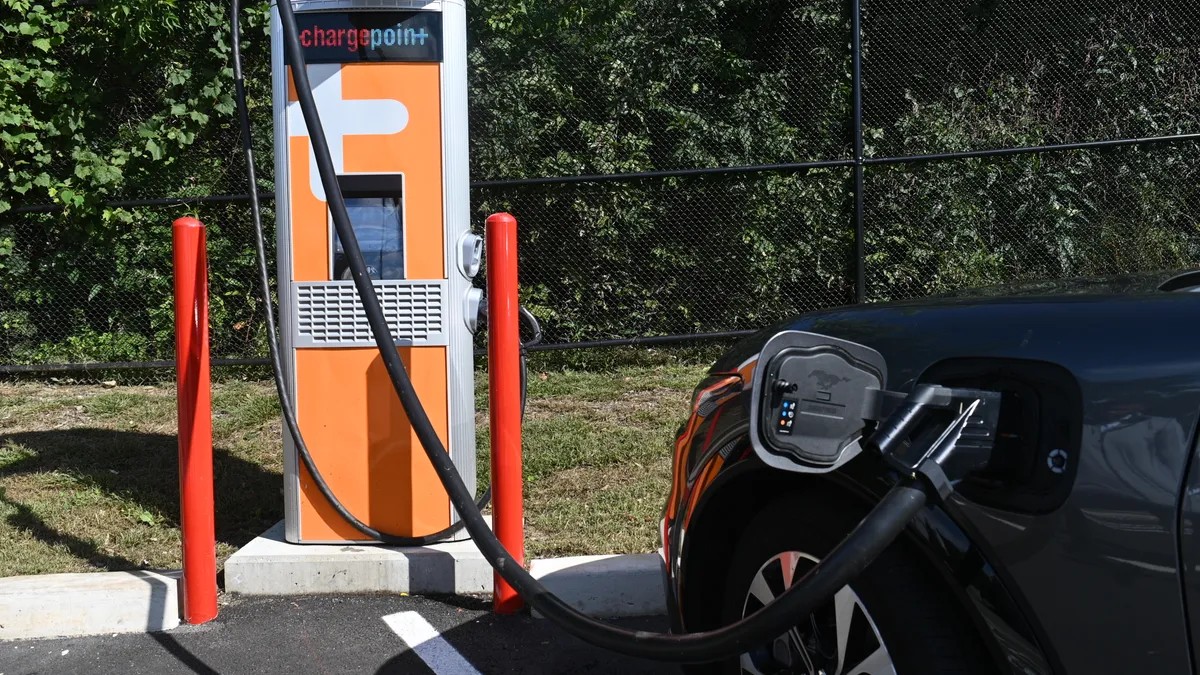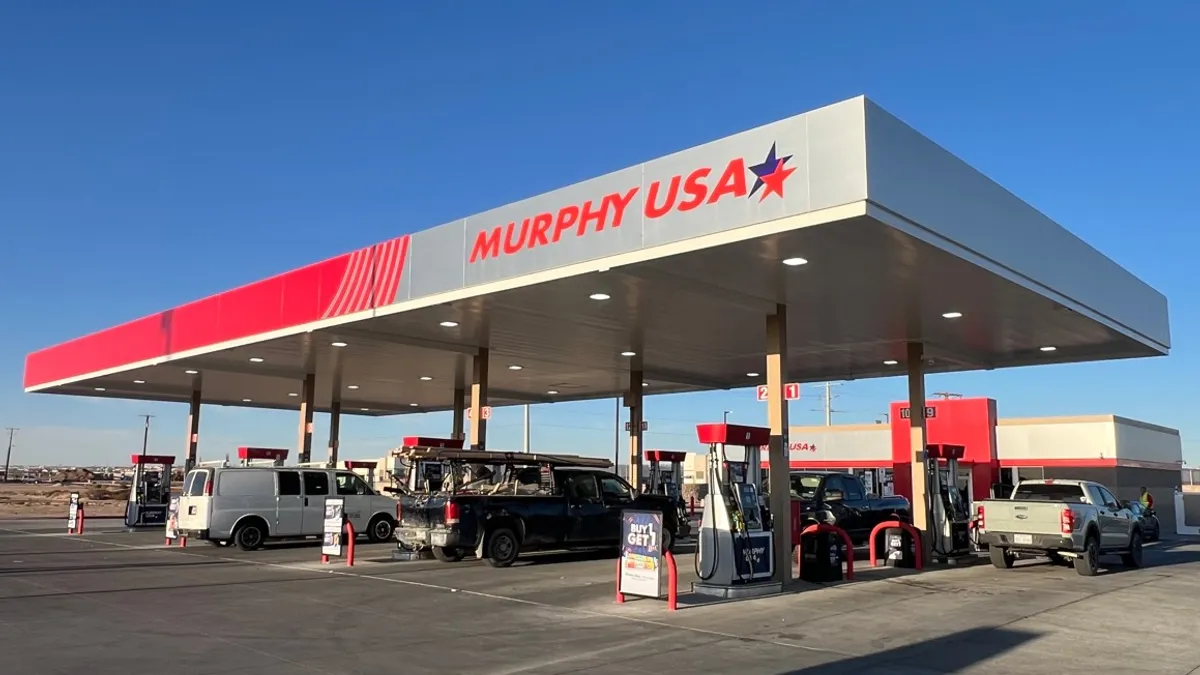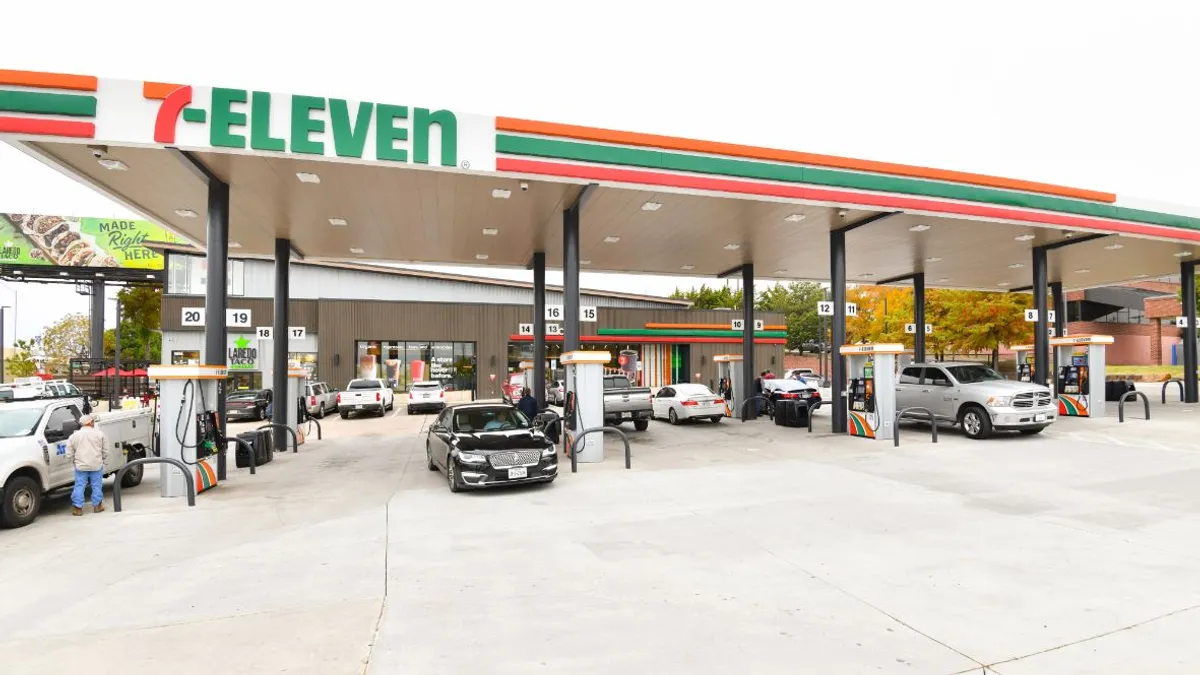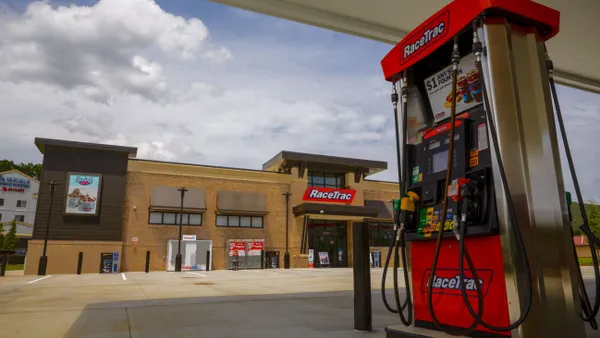Dive Brief:
- The average time electric vehicles spent charging at ChargePoint’s fueling and convenience store locations was 0.7 hours, or just over 40 minutes, in 2023, according to emailed data from the company.
- That 40-minute charge remains a far cry from the quick fill-ups of gasoline powered engines, but “a typical EV driver … [is] probably jumping in and [charging] a little bit and then taking off,” said Rich Mohr, senior vice president, Americas for ChargePoint in an interview.
- As the c-store industry cools somewhat on the EV charging push, factors like charge time and profitability continue to be at the forefront as retailers decide if they want to add the amenity.
Dive Insight:
It typically takes 35 to 40 minutes to charge a low battery up to about 80%, Mohr said. While some c-stores see drivers taking that much time, especially if the store is on a route commonly used for long trips, some customers leave more quickly.
“Every driver doesn't sit there for 40 minutes,” Mohr said.
EV adoption is growing, and that’s reflected in the growth of ChargePoint’s fueling and convenience market. Major c-store companies using its technology include Kum & Go and 7-Eleven. An upcoming EV charging partnership between Mercedes-Benz and Buc-ee’s will also use ChargePoint hardware.
While the number of charging ports at these sites rose less than 50% in 2023, the number of charging sessions more than doubled. However, experts expect retailers will be more judicious about adding chargers going forward.
Mohr noted that retailers should go into charging with a clear understanding of the market in their area and what role charging will play in their plans. Mohr said chargers generally need about 30% utilization to be profitable by themselves, which is “slightly above” the average utilization rate of unleaded fuel pumps.
“Do they want to drive additional loyalty?” he asked. “Do they want to sell something that's a part of their overall business? Are they in an area where they're seeing EV penetration grow faster than they anticipated?”
They also need to make sure their site is set up for those longer waits. While drivers wait for their cars to charge, some of the top amenities they want out of a site are coffee, bathrooms, Wi-Fi and food, according to research from Deloitte.
The average time ChargePoint reported may be inflated by usage from people who use EVs for work, such as rideshare drivers who tend to run the car down near empty and charge it back to full in one session, Mohr noted.
Average charge times may also be nudged up by drivers trying to get closer to 100%. EVs slow down the rate of charging from direct-current fast chargers past around 80%, to help protect the battery.












